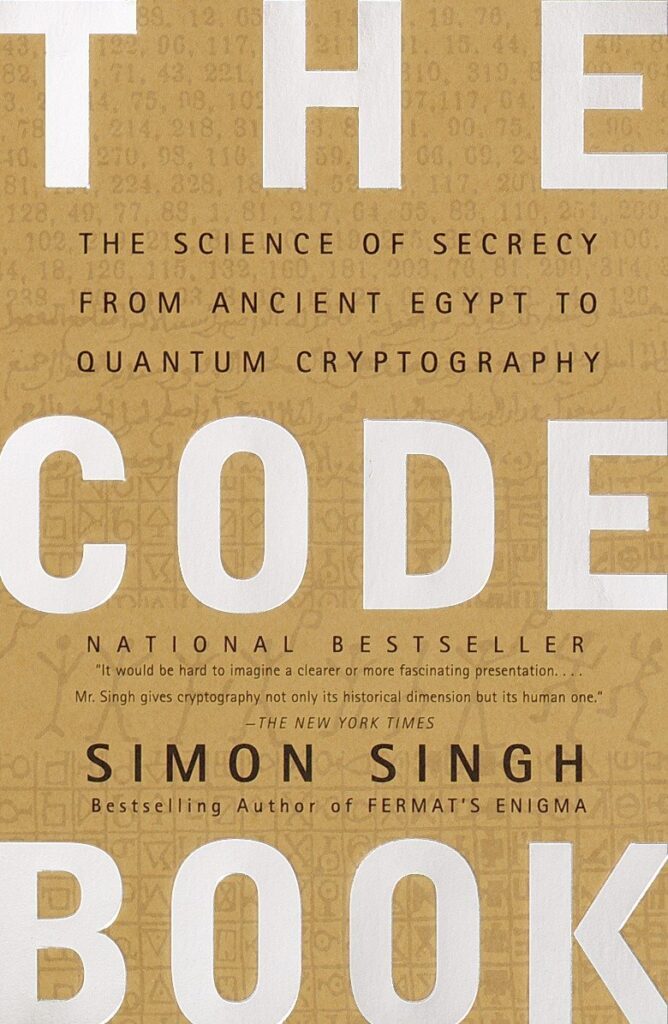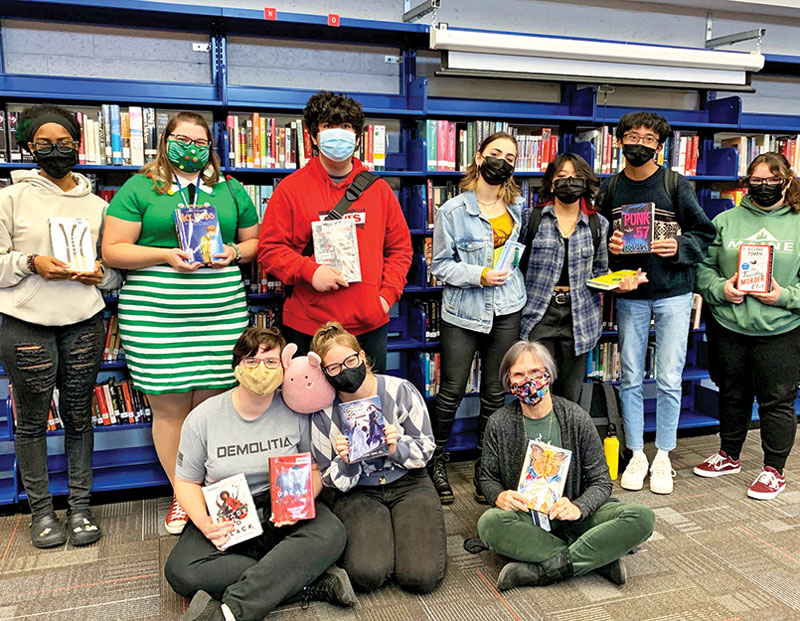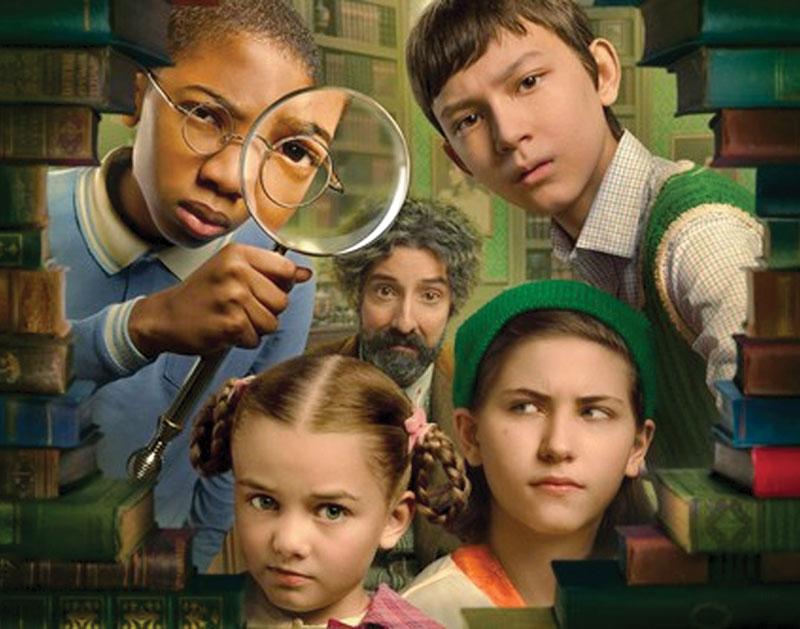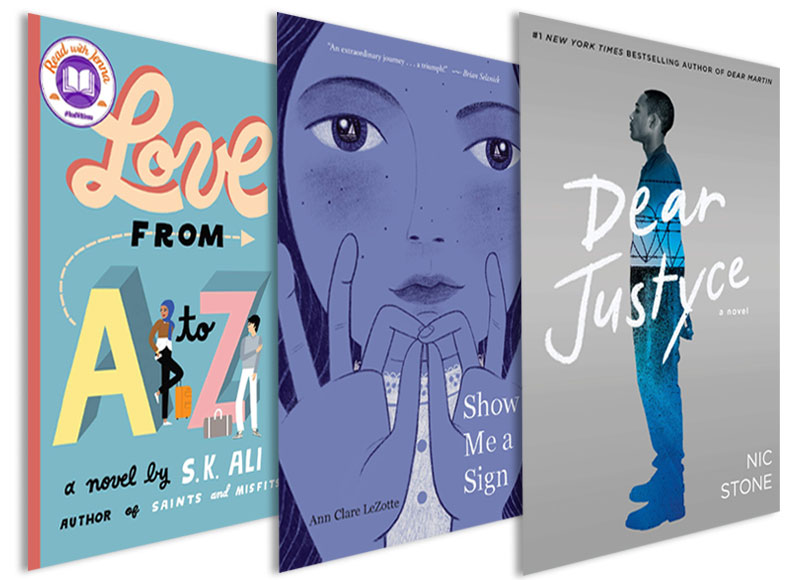Three Resources That Shaped the World of THE IVORY KEY, a guest post by Akshaya Raman

When I set out to write THE IVORY KEY, I wanted to write a fun fantasy adventure book with puzzles and treasure hunts and a fractured family. But as I began to infuse more elements of my own culture into the book, it became clear that I was going to be digging farther into India’s vast and fascinating history than I ever imagined. THE IVORY KEY isn’t a historical fantasy, but a lot of elements, small and large, did in fact come from the real world. Not all of what I researched actually made it into the book, but I wanted to share three resources that were invaluable in helping me build the world and story of THE IVORY KEY.

The Code Book by Simon Singh
When I was around 11 or 12 years old, visiting my grandparents in India, I found a book left behind by one of my uncles. I’d grown up reading the mystery books my parents passed down to me (Nancy Drew, Sherlock Holmes, The Famous Five etc.) so of course I was immediately intrigued by something called The Code Book. The title alone seemed to promise curious secrets hidden within its pages, so I grabbed it and cracked it open at once. I didn’t realize at first that it was a nonfiction book detailing the history of cryptography, but it was so entrancing that I read the whole thing that summer, even though a lot of the historical context was lost on me at that time.
ADVERTISEMENT
ADVERTISEMENT
I didn’t realize how much of an impression this book left on me until I started working on THE IVORY KEY and I could recall with startling accuracy several passages on codes from this book. Some of the puzzles the siblings find—including a polyalphabetic substitution cipher—were things I originally learned about from The Code Book. And since then, I’ve reread it several times, incorporating additional details into THE IVORY KEY duology.

Sanrachna: Magic of Ancient Architecture
On a random day several years ago, as I was scrolling through Netflix, I stumbled onto a collection of docuseries created by Epic TV, an Indian television channel. I’d been spending hours researching Indian history online, trying to find answers to specific questions like “what did the inside of this fort look like?” or “what kind of food was common in this region in this time period?” I wanted to know these details so I could more accurately build the world of Ashoka, and I’d been struggling to find the specificity I wanted. And I was so shocked to discover that there were entire series devoted to answering exactly these questions, in a visual format, with explanations from actual historians and scholars.
There are several shows that I loved on Epic, but one that stood out to me was Sanrachna, which showcased the architecture of India. It delves not only into the history, but the engineering behind the constructions, explaining how ancient architects used science to naturally cool down buildings during the hot months or used the understanding of how sound travels to devise a clever alarm system where a small noise made in one part of the fort could be heard half a mile away. When I incorporated some of these elements into my world, I explained it away with magic. But the real magic is that these kinds of technological achievements actually existed in the real world centuries ago.
Family members
I wrote a book about a complex family so it feels unfair to not mention the ways in which my own family shaped the story I was trying to tell.
My maternal grandmother is recognized within our family and local community for preserving and chronicling a lot of old Tamil traditions. She is a wealth of knowledge and I loved being able to call her and ask her about archaic practices. She told me stories about fragrant wildflowers that grow on riverbanks, petals laden with tiny snakes that had to be carefully removed before they could be harvested. She told me about nearly forgotten herbal medicines and treatments for snake bites and other injuries and ailments. And she was very patient (and a bit bewildered) as she answered my many questions about the organization and structure of temples and how one might, say, break into one.
ADVERTISEMENT
ADVERTISEMENT
But another unexpected resource was a book written by my paternal great-grandfather, TG Aravamuthan, a scholar who studied ancient Indian coins. A few years ago, right as I was starting to work on THE IVORY KEY, my dad ordered a used copy of his grandfather’s book online. To our utter shock and delight, it turned out to be a signed copy—and even more surprisingly, the book talked about the influence of Mediterranean countries on Indian currency. While THE IVORY KEY takes place entirely in Ashoka, a country inspired by ancient India, their western neighbor, Lyria, is inspired by the old Greek and Roman empires. In a strange twist of fate, my great-grandfather had written about the very thing that I was researching at that moment, and I loved incorporating some of the details and motifs he wrote about into the world and currency of Ashoka.
Meet the author

Akshaya Raman fell in love with writing when she wrote her first story at the age of ten. Though she graduated from UC Davis with a degree in biology, she gave up pursuing a career in science to write books. She is a co-founder and contributor to Writer’s Block Party, a group blog about writing and publishing, and has served on the planning teams of several book festivals. She lives in the Bay Area with an actual scaredy cat, and in her free time, she enjoys baking, traveling, and watching too much reality TV.
Instagram: @akshraman
About The Ivory Key
In this epic YA fantasy debut, magic, a prized resource, is the only thing between peace and war. When magic runs out, four estranged royal siblings must find a new source before their country is swallowed by invading forces. The first in an Indian-inspired duology that’s perfect for fans of There Will Come a Darkness, The Gilded Wolves, and We Hunt the Flame.Vira, Ronak, Kaleb, and Riya may be siblings, but they’ve never been close or even liked each other that much. Torn apart by the different paths their lives have taken, only one thing can bring them back together: the search for the Ivory Key, a thing of legend that will lead the way to a new source of magic. Magic is Ashoka’s biggest export and the only thing standing between them and war with the neighboring kingdoms—as long as their enemies don’t find out that the magic mines are nearly depleted.
The siblings all have something to gain from finding the Ivory Key, and even more to lose if they don’t. For Vira, the Ivory Key is the only way to live up to the legacy of her mother, the beloved former maharani. Ronak plans to get out of his impending political marriage by selling the Ivory Key to the highest bidder. Kaleb has been falsely accused of assassinating the former maharani, and this is the only way to clear his name. And Riya needs to prove her loyalty to the Ravens, the group of rebels that wants to take control away from the maharani and give it to the people. With each sibling harboring secrets and conflicting agendas, figuring out a way to work together may be the most difficult task of all. And in a quest this dangerous, working together is the only way to survive.
ISBN-13: 9780358468332
Publisher: HarperCollins Publishers
Publication date: 01/04/2022
Series: Ivory Key Duology
Age Range: 12 – 18 Years
Filed under: Uncategorized
About Amanda MacGregor
Amanda MacGregor works in an elementary library, loves dogs, and can be found on Twitter @CiteSomething.
ADVERTISEMENT
ADVERTISEMENT
SLJ Blog Network
Name That LEGO Book Cover! (#53)
Cover Reveal and Q&A: The One and Only Googoosh with Azadeh Westergaard
Exclusive: Vol. 2 of The Weirn Books Is Coming in October | News
Fighting Public School Book Bans with the Civil Rights Act
ADVERTISEMENT







